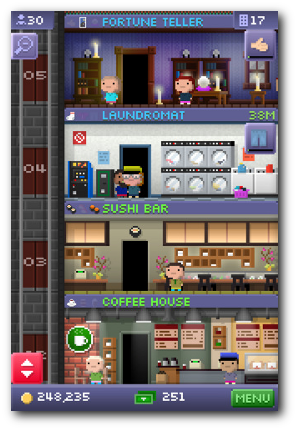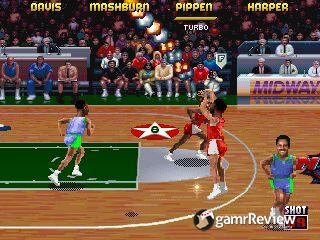One of the most prominent discussion about games in the last year or so have all revolved around the viability of the current business model, specifically:
Freemium Games. The wiki definition is a pretty solid description:
Freemium is a business model that works by offering a game, product or service free of charge (such as software, web services or other) while charging a premium for advanced features, functionality, or related products and services.
In the video game world though, there's been very strong debates on what constitutes "advance features, functionality, related products and services". By the most basic definition, even basic
DLC can be considered "freemium", as it offers new content for a premium fee (other than the base game not being free at all). In fact, some companies have tried approaching this model with traditional retail games (see
MX vs. ATV Alive) with less than impressive result.
It's hard to say whether this model actually works or not given there's only been one attempt. Guess it's something we'll never know.
This post isn't about mixing in freemium with traditional retail game model, but rather the strict "free" model. In addition, games that sell "content packs" that isn't repeatedly re-purchasable in a solo play setting (IE, extra modes/levels) don't technically fall into the same discussion. While they are proper "freemium", no game balance issues occur, as players are at worst only locked away from additional content (which technically works like DLC). What I'm after is specifically anything re-purchasable: in game currency/"energy", in game stat boost (both temporary and permanent), and any freemium content that changes the balance of play in a competitive game.
==================================
The concept of in game currency/"energy" is probably the model most familiar to people. You may have seen it in pretty much all of Zynga's games (or practically most Facebook social games), and it's starting to trickle over to iOS games. My latest obsession on iOS,
Tiny Towers, uses this model as it's entire revenue scheme (how successful though, is another debate).

Farmville

Tiny Towers
And truth to be told about this model:

Two interesting points arise, especially from a designer standpoint:
a) The games were designed with breaks in mind, and by implementing such a feature to "allow" players to play by paying. This "time for money" model in theory hurts no one, but I often question whether it ends up playing into people's OCD instincts, the need to "complete" rather than the need to "play". I look at Tiny Towers and I often ask myself: "why is it fun and why do I keep coming back"; certainly, there's some management aspect to it, but it's so minuscule it's inconsequential. All I have is the want of "filling up my building with people", which isn't that good of a "gameplay hook" but rather a "addict hook", triggering the compulsive need to collect and complete.
b) While technically there is a competitive aspect (via seeing your friend's progress), there is no direct competition, which softens the blow if and when someone decides to pay up to speed up progress? Your friends paid money to grow faster? Great, you now can feel wonderful knowing that they paid for something virtual, like getting an extra 500 points. (Here, have 500 points, don't you feel wonderful too!)
In this freemium model, games aren't "unbalanced" by someone throwing in a wad of cash; then again, there might not be much of a game to be "unbalanced" to begin with. For a game like Tiny Towers, I've yet to feel the need to pay for more (which should be a concern on the dev's part). I'm indifferent to games using such a model, and I'm sure there's been well done implementations of it. The only concern I would have with this model is when the business side creeps over every design decision. One example would be Let's Golf 3 by Gameloft: I'll let
this review do the talking:
While I think that being able to earn cash (and thus, energy) by playing well is a good gameplay mechanic, the fact that you can only passively earn one unit of energy per hour is ridiculous. In other words, if you’re not that good at the game, you’re going to be punished rather harshly by either having to wait a long time for energy or shell out money to play. Meanwhile, someone that’s better at the game might be able to play significantly longer (and level up faster) by earning more cash in-game and converting it to energy. I personally had no problem scoring birdies and earning enough cash and energy to continually play, but I just think that the energy cool down is way too long for most gamers. It’s definitely going to alienate a lot of players who simply don't have any in-game cash and aren't going to pay or wait an hour to play one hole.
==================================
While I had wanted to write something about Freemium for a while,
this article about BigPoint is really what triggered me to finish it. In it, Philip Reisberger has some amazing insight on how to charge for in game content, especially in light of game balance:
"In a nutshell, EA doesn't understand it," he adds, referring to EA's insistence that a Battlefield 3 pre-order bonus containing advanced weaponry would not give players a competitive advantage. "It wouldn't ruin the game. If selling an advantage ruins the game, you haven't done the balancing right…EA and Ubisoft, for example, they're both trying, but they're not really there yet.
Note the bolded line: If an advantage ruins the game, then it isn't balanced.
But wait. If it's balanced, how can it be an advantage?
OK, but if there's no advantage, then what the hell am I selling to people to actually give them an advantage?
OK, let's say I do come up with an advantage, but then is it still balanced?
We've reached a paradoxical issue: If you sell freemium content, how does it affect game balance? Can you truly call it balance if someone can buy their way to an advantage? The examples I've seen are truly frightening: "sell more ammo", "carry more items", "faster respawn". If you take a sports analogy, it'd be the Yankees paying the ref to get an extra out for an inning, or everyone getting aluminum bats for their next turn.
I don't want to say that it's impossible, but every time I read someone say "you aren't fully exploiting what can be done with freemium", I would worry about every other gameplay issue they haven't thought about.













